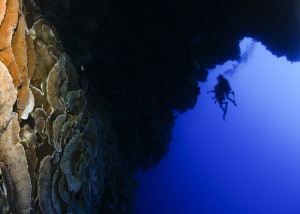Almost All Seabirds to Have Plastic in Gut by 2050
The study, led by Dr Chris Wilcox with co-authors Dr Denise Hardesty and Dr Erik van Sebille and published today in the journal PNAS, found that nearly 60 per cent of all seabird species have plastic in their gut.
Based on analysis of published studies since the early 1960s, the researchers found that plastic is increasingly common in seabird’s stomachs.
In 1960, plastic was found in the stomach of less than 5 per cent of individual seabirds, rising to 80 per cent by 2010.
The researchers predict that plastic ingestion will affect 99 per cent of the world’s seabird species by 2050, based on current trends.
The scientists estimate that 90 per cent of all seabirds alive today have eaten plastic of some kind.
This includes bags, bottle caps, and plastic fibres from synthetic clothes, which have washed out into the ocean from urban rivers, sewers and waste deposits.
Birds mistake the brightly coloured items for food, or swallow them by accident, and this causes gut impaction, weight loss and sometimes even death.
“For the first time, we have a global prediction of how wide-reaching plastic impacts may be on marine species – and the results are striking,” senior research scientist at CSIRO Oceans and Atmosphere Dr Wilcox said.
“We predict, using historical observations, that 90 per cent of individual seabirds have eaten plastic. This is a huge amount and really points to the ubiquity of plastic pollution.”
Dr Denise Hardesty from CSIRO Oceans and Atmosphere said seabirds were excellent indicators of ecosystem health.
“Finding such widespread estimates of plastic in seabirds is borne out by some of the fieldwork we’ve carried out where I’ve found nearly 200 pieces of plastic in a single seabird,” Dr Hardesty said.
The researchers found plastics will have the greatest impact on wildlife where they gather in the Southern Ocean, in a band around the southern edges of Australia, South Africa and South America.
Dr van Sebille, from the Grantham Institute at Imperial College London, said the plastics had the most devastating impact in the areas where there was the greatest diversity of species.
“We are very concerned about species such as penguins and giant albatrosses, which live in these areas,” Erik van Sebille said.
“While the infamous garbage patches in the middle of the oceans have strikingly high densities of plastic, very few animals live here.”
Dr Hardesty said there was still the opportunity to change the impact plastic had on seabirds.
“Improving waste management can reduce the threat plastic is posing to marine wildlife,” she said.
“Even simple measures can make a difference, such as reducing packaging, banning single-use plastic items or charging an extra fee to use them, and introducing deposits for recyclable items like drink containers.
“Efforts to reduce plastics losses into the environment in Europe resulted in measureable changes in plastic in seabird stomachs with less than a decade, which suggests that improvements in basic waste management can reduce plastic in the environment in a really short time.”
Chief Scientist at the US-based Ocean Conservancy Dr George H. Leonard said the study was highly important and demonstrated how pervasive plastics were in oceans.
“Hundreds of thousands of volunteers around the world come face-to-face with this problem during annual Coastal Cleanup events,” Dr Leonard said.
“Scientists, the private sector and global citizens working together against the growing onslaught of plastic pollution can reduce plastic inputs to help protect marine biodiversity.”
The work was carried out as part of a national marine debris project supported by CSIRO and Shell’s Social investment program as well as the marine debris working group at the National Center for Ecological Analysis and Synthesis, University of California, Santa Barbara, with support from Ocean Conservancy.
Almost All Seabirds to Have Plastic in Gut by 2050 Read More »
 Why do some dive sites seem prone to more accidents?
Why do some dive sites seem prone to more accidents?